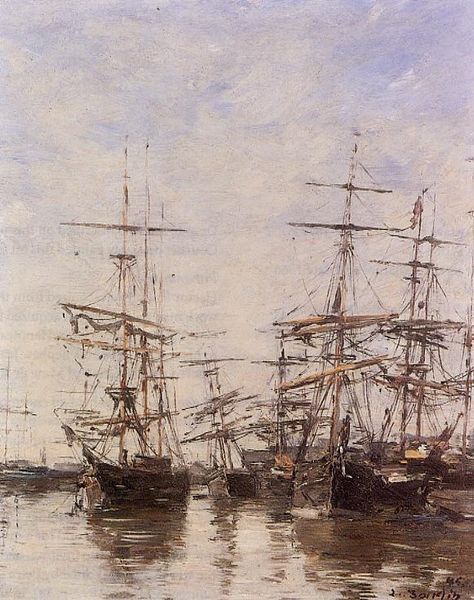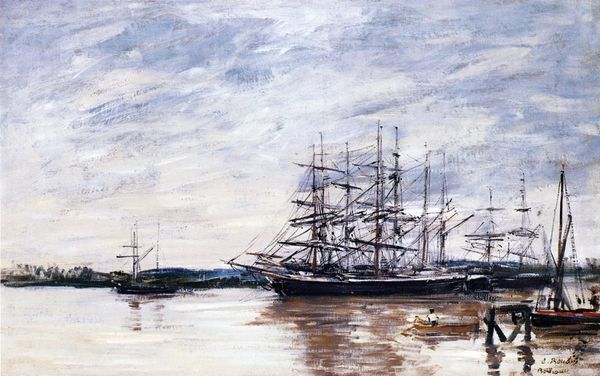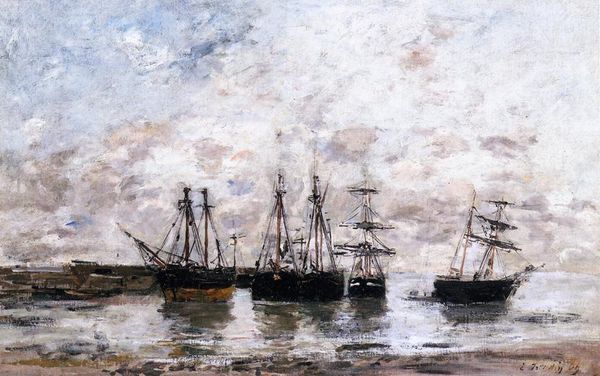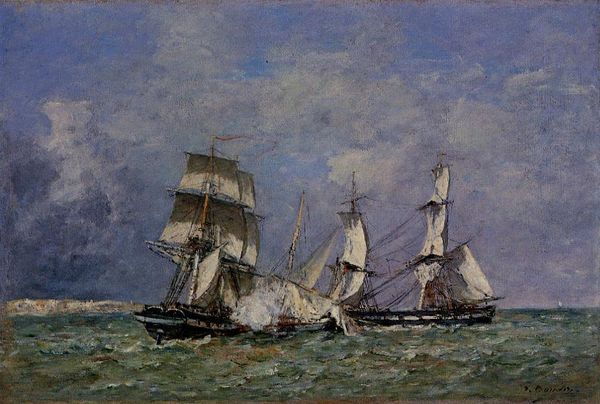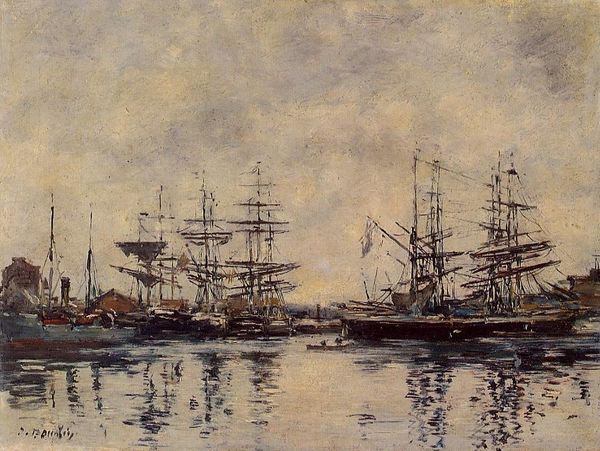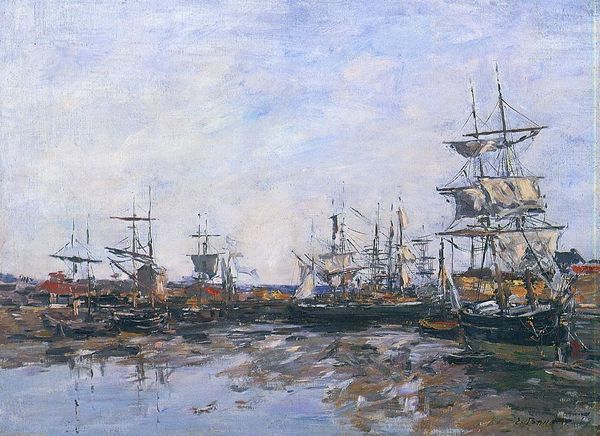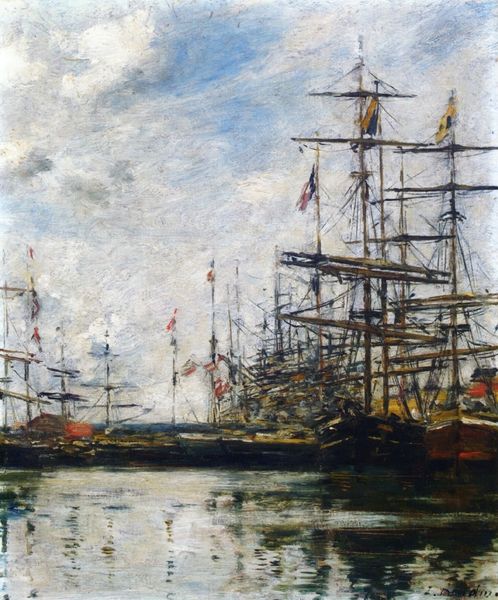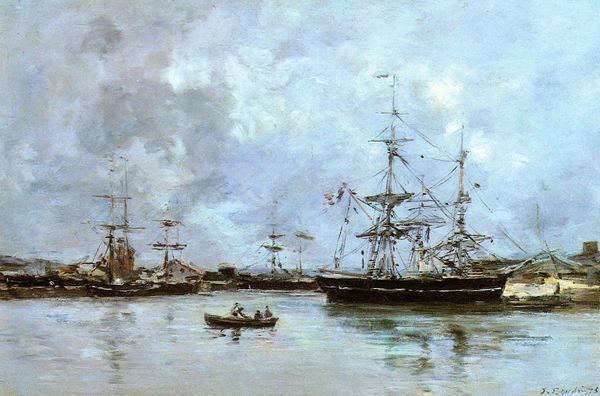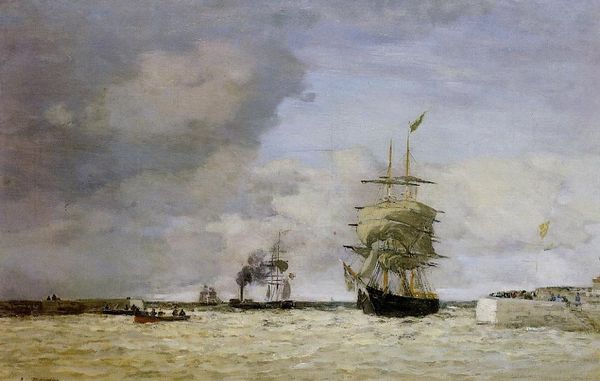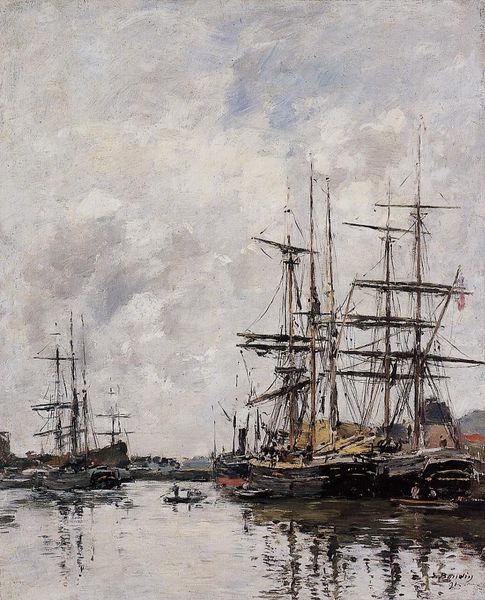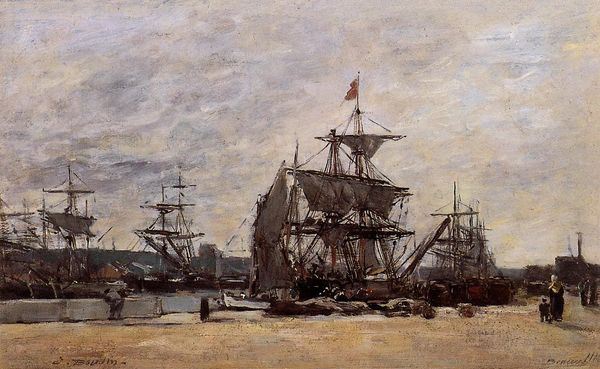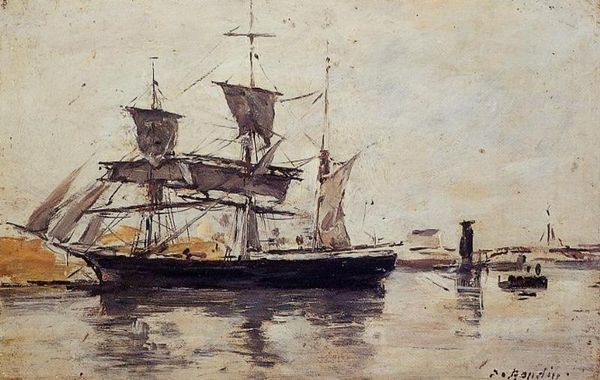
painting, oil-paint
#
boat
#
ship
#
painting
#
impressionism
#
oil-paint
#
vehicle
#
landscape
#
possibly oil pastel
#
oil painting
#
ocean
#
line
#
cityscape
#
watercolor
#
sea
Copyright: Public domain
Editor: This is Eugène Boudin's "Le Havre, Three Master at Anchor in the Harbor," painted in 1879. It's an oil painting and it definitely captures a still and quiet morning by the sea. What sort of themes or hidden meanings do you see here? Curator: This piece evokes a powerful sense of transition and history. Look closely at those three-masted ships; what do they represent to you in the context of 1879? These weren't just boats, they were vessels of global exchange, of trade and, indeed, often exploitation. They symbolize a specific moment of industrial advancement inextricably bound to a darker colonial past. Editor: That's a perspective I hadn't considered. I was focusing more on the impressionistic style and the play of light on the water. Curator: Precisely. Boudin’s impressionistic rendering doesn’t shy away from the beauty, but, viewed with a socio-historical awareness, even the tranquility carries the weight of that era. How does knowing this change your appreciation? Editor: It definitely adds layers. I initially saw a peaceful scene, but now I see that it also encapsulates the complex history of trade and colonialism. It makes me think about how even seemingly idyllic images can carry so much cultural baggage. Curator: Absolutely. Boudin has given us a mirror reflecting not only the harbor at Le Havre, but also the broader historical currents that shaped it and our understanding of it. Recognizing symbols gives art lasting relevance. Editor: I'll never look at harbor scenes the same way again. It’s fascinating how much a painting can reveal about an era's values, and the impact these had worldwide. Curator: Indeed. The visual world whispers stories to those who listen closely.
Comments
No comments
Be the first to comment and join the conversation on the ultimate creative platform.
